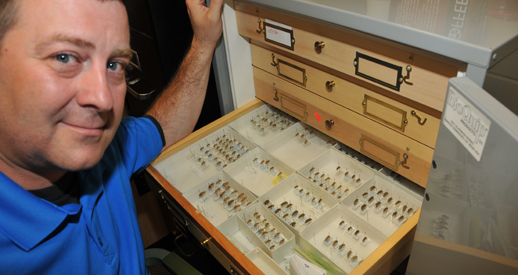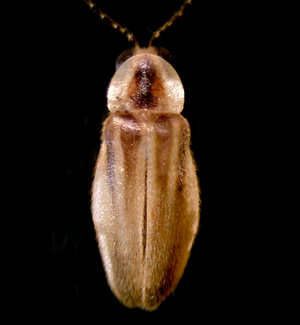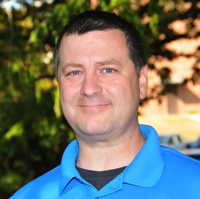
Archive
DSU Dr. Christopher Heckscher Discovers New Species of Firefly
Wednesday, October 9, 2013
10/9/13
|
|
As far as anyone at DSU can remember, there has never been a scientist at the University (or for that matter, when it was a College) that could lay claim to the discovery of a new animal species.
That is, until recently.
Dr. Christopher Heckscher, associate professor of environmental science in the Department of Agriculture and Natural Resources, has become a DSU first with his discovery of a new species of firefly that had never been identified before in the world.
The firefly is a new species among the Photuris genus of fireflies, and Dr. Heckscher has named the newly identified illuminating insect Photuris mysticalampas. His discovery is substantiated in a published peer reviewed paper entitled “Photuris Mysticalampas (Coleoptera Lampyridae): A New Firefly from Peatland Floodplain Forests of the Delmarva Peninsula.”
Dr. Heckscher originally discovered the new firefly in 2004 when he was working as the state zoologist for the Delaware Department of Natural Resources and Environmental Control. As he was doing a survey of Prime Hook National Wildlife Refuge along the Delaware Bay in Sussex County Delaware, he had what he believed was his first encounter with the insect.
“I collected a firefly at Prime Hook I couldn’t identify and thought it was just a rare species I wasn’t familiar with,” he said. “Then a couple of years later I was doing a field survey in the Nanticoke wildlife area (also in Sussex County) and I came across it again. At that point, I realized it might be a new species.”
To satisfy his scientific curiosity, Dr. Heckscher took the firefly to Florida to consult with the then-foremost authority in the country on firefly species – Dr. James Lloyd.
“(Dr. Lloyd) wasn’t familiar with it either,” Dr. Heckscher said. “I knew that if he didn’t know it, then it had to be an unknown species.”
Dr. Heckscher began teaching full-time at DSU in 2008, and it has been during his tenure at the University that he did the bulk of the research work to prove that the firefly was a new species.
He studied the unidentified firefly using a “dichotomous key” that compared specific characteristics of the firefly with known firefly species . The more the DSU associate professor studied the firefly, the more he became convinced that he had discovered a species unknown to science.
|
|
“This discovery was unique because this firefly was found in this region, which has been well studied,” Dr. Heckscher said, “I think it’s a great example of how much we still have to learn about our natural world. If a firefly can go undiscovered how much else are we missing?”. He added, however, the firefly he discovered was found in remote sections of Delaware wildlife areas largely untouched by man.
In comparing his find to other fireflies, the newly discovered firefly was distinguished from other species by its distinct oval body, small size, flash pattern, and dense pubescent elytra (forewing).
This year, Dr. Heckscher submitted his paper to Entomological News, which had his work peer reviewed by a number of anonymous scientists. After none of the reviewers took any exceptions with any of Dr. Heckscher’s research , his paper was published in the scientific journal in its July-August 2013 issue, which was released in the last week of September.
Dr. Heckscher’s work in discovering the Photuris mysticalampas is far from the end of the story where his research is concerned. “Nothing is known about this species,” he said. “So everything I find out will be new.”
Dr. Heckscher is both an entomologist (one who studies insects) and an ornithologist (one who studies birds). In addition to his firefly research, he has also broken new ground in the study of the previously unknown migration patterns of the Veery songbird.
Sometimes when he takes his wife and two daughters camping, Dr. Heckscher often makes his research work a part of the outing. Fortunately his wife Jennie, is an entomologist who teaches at Waters Middle School in Middletown, Del., shares his never-ending scientific curiosity.
“When we go camping, I may plan to be somewhere in the area of fireflies,” Dr. Heckscher said. “If I can collect data while on vacation… why not?”


 The Photuris Mysticalampas is the new firefly genus species previously unknown to science that Dr. Christopher Heckscher has discovered in Delaware.
The Photuris Mysticalampas is the new firefly genus species previously unknown to science that Dr. Christopher Heckscher has discovered in Delaware. Dr Christopher Heckscher
Dr Christopher Heckscher